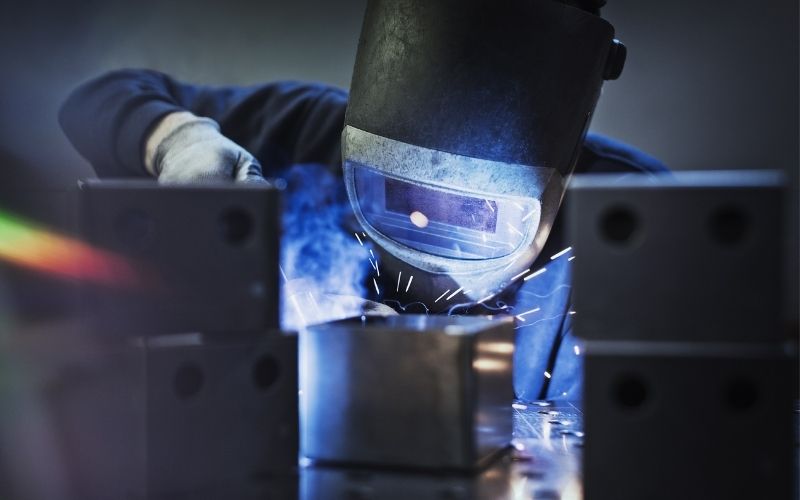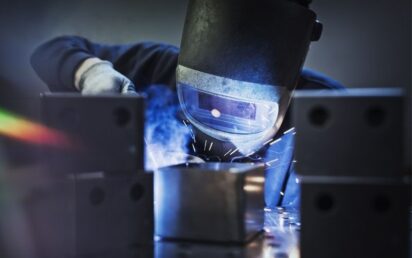In a world ever reliant on the continuous cycle of production and consumption, the manufacturing sector stands as one of the defining pillars of the global economy. It’s a dynamic landscape that finds itself in the throes of significant transformation, as rapid technological advancements relentlessly push the boundaries of what’s possible.
Navigating this evolving terrain requires not only a deep understanding of the current state of affairs but also the ability to anticipate what’s on the horizon. In this article, delve into six critical trends that are poised to shape the future trajectory of the manufacturing industry.
Increased Automation
Automation, a concept that was once the realm of science fiction, has become a commonplace reality within the manufacturing sphere. Its presence is increasingly palpable across a broad swath of applications, from mechanical arms tirelessly assembling products on conveyor belts, to packaging processes seamlessly executed with precision and consistency.
This trend isn’t just about replacing human labour with machines; it’s about a fundamental shift in manufacturing paradigms. Automation can drastically increase efficiency, reduce errors typically associated with manual processes, and significantly enhance safety by minimising human exposure to hazardous environments.
As automation takes over routine, repetitive tasks, the focus for human roles shifts towards tasks that require complex problem-solving, creativity, and interpersonal skills. Consequently, the trend of increased automation is fostering a pressing need for upskilling and reskilling within the manufacturing workforce.
Rise of AI and Machine Learning
In the context of the fourth industrial revolution, Artificial Intelligence (AI) and Machine Learning (ML) have emerged as pivotal game-changers. They’re no longer isolated, futuristic concepts, but integrated, active components driving manufacturing processes.
AI and ML are instrumental in predictive maintenance, spotting potential malfunctions or irregularities in machinery before they escalate into costly downtime or safety issues. In addition, they play a crucial role in quality control, recognising deviations from expected standards more accurately than human inspectors.
Furthermore, they’re indispensable for production planning, helping manufacturers optimise their operations, reduce waste, and increase output. With AI and ML, manufacturers have at their fingertips the power to turn vast quantities of data into actionable insights, significantly improving the overall manufacturing process. As the capabilities of AI and ML continue to evolve and their applications expand, the potential for their transformative impact on the manufacturing industry will only grow.
The Evolving Role of Traditional Manufacturing Tools
As the manufacturing industry propels itself into the future with breakneck speed, traditional tools find themselves not left in the dust but evolving alongside. These tools, familiar sights in manufacturing settings, are being enhanced with modern technology, employing better materials and design for improved performance and extended lifespan.
For example, developments in cutting machine technology mean that today’s structural bandsaw blades are able to deliver enhanced performance and lifespan compared to equivalents from the past. These benefits translate into more efficient and productive manufacturing and production processes for the businesses that use them.
In the race to adopt the newest technologies, it’s essential not to lose sight of the foundations upon which manufacturing is built. There’s a delicate, yet crucial, balance to be struck between leveraging state-of-the-art advancements and maintaining reliable, tried-and-true tools and techniques.
In many ways, the future of manufacturing depends as much on this harmonious integration of the old and the new as it does on innovation alone.
3D Printing & Advanced Manufacturing Techniques
3D printing, also known as additive manufacturing, along with other advanced manufacturing techniques, are pushing the boundaries of what’s possible in production.
These techniques enable rapid prototyping, allowing manufacturers to quickly and efficiently bring their ideas from concept to reality. They also allow for on-demand production, reducing the need for extensive inventory and making it possible to respond swiftly to market changes. Furthermore, these techniques open the door to the creation of complex structures that would have been challenging or impossible with traditional manufacturing methods.
While adopting such advanced techniques requires a significant upfront investment and ongoing training to keep skills up-to-date, the long-term benefits far outweigh the initial challenges. By enabling manufacturers to shorten lead times, reduce waste, and offer customised manufacturing capabilities, these techniques offer a glimpse into a future where manufacturing is more flexible, responsive, and innovative than ever before.
Sustainability in Manufacturing
Today’s manufacturing sector is increasingly characterised by a holistic focus on sustainability. It’s a shift driven by both regulatory pressures and consumer demand for environmentally friendly products. Manufacturers are seeking ways to minimise their environmental impact by reducing energy consumption, decreasing waste, and adopting sustainable materials wherever possible. These changes aren’t just about compliance or image — they’re also about profitability. E
Energy-efficient processes often lead to lower operating costs, and reduced waste means more efficient use of materials. Moreover, a demonstrated commitment to sustainability can significantly enhance a manufacturer’s reputation, appealing to a growing market of consumers who value environmental responsibility. Thus, the push towards sustainable manufacturing is shaping up to be not only an ethical imperative but also a strategic business advantage.


